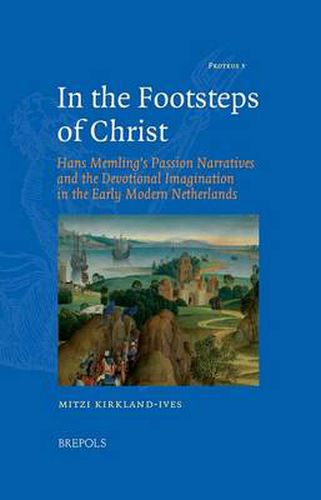Readings Newsletter
Become a Readings Member to make your shopping experience even easier.
Sign in or sign up for free!
You’re not far away from qualifying for FREE standard shipping within Australia
You’ve qualified for FREE standard shipping within Australia
The cart is loading…






Hans Memling's Scenes from the Passion of Christ leads the viewer on a long and arduous journey in the space of just under a metre. The panel presents a 'continuous narrative' on a grand scale, offering roughly two-dozen individual episodes from the last week of Christ's life. These scenes are represented in a single contiguous cityscape and the surrounding countryside, and viewers would have followed the narrative recounted across the panel, following the action from station to station along painted roads and pathways, through gateways and portals and implied passageways as pedestrians in their imaginations. This study considers the intersections between narrative art and a range of devotional practices current in the late Middle Ages and early modern period. This body of practices stood in a symbiotic relationship with the visual imagery, informing viewers' interaction with images, which in turn affected their understanding of these other practices. In other words, these images must be understood as part of a broader tradition of ritual and symbolic life. As such, the study offers a valuable re-evaluation of Memling and his art within the religious practice of his times, while opening up some of his most ingenious and idiosyncratic works that are little known by non-specialists.
$9.00 standard shipping within Australia
FREE standard shipping within Australia for orders over $100.00
Express & International shipping calculated at checkout
Hans Memling's Scenes from the Passion of Christ leads the viewer on a long and arduous journey in the space of just under a metre. The panel presents a 'continuous narrative' on a grand scale, offering roughly two-dozen individual episodes from the last week of Christ's life. These scenes are represented in a single contiguous cityscape and the surrounding countryside, and viewers would have followed the narrative recounted across the panel, following the action from station to station along painted roads and pathways, through gateways and portals and implied passageways as pedestrians in their imaginations. This study considers the intersections between narrative art and a range of devotional practices current in the late Middle Ages and early modern period. This body of practices stood in a symbiotic relationship with the visual imagery, informing viewers' interaction with images, which in turn affected their understanding of these other practices. In other words, these images must be understood as part of a broader tradition of ritual and symbolic life. As such, the study offers a valuable re-evaluation of Memling and his art within the religious practice of his times, while opening up some of his most ingenious and idiosyncratic works that are little known by non-specialists.